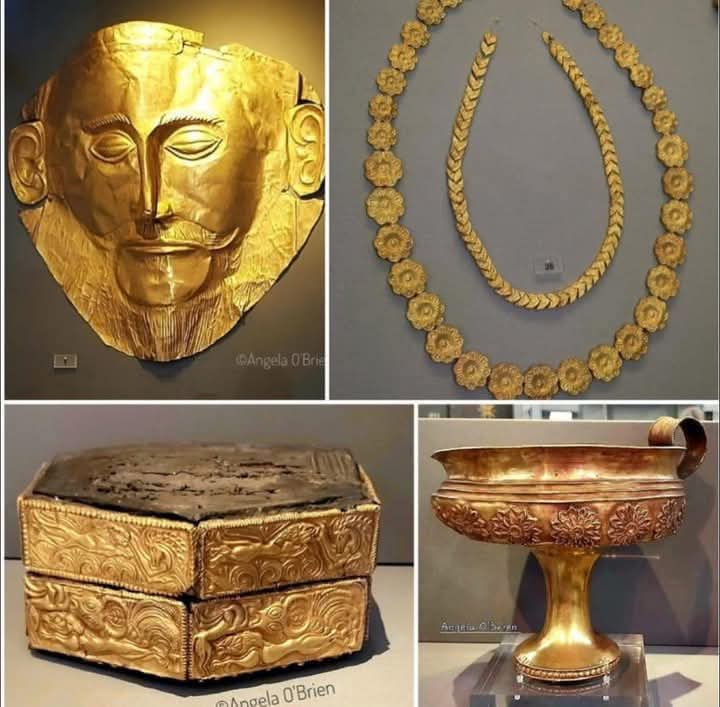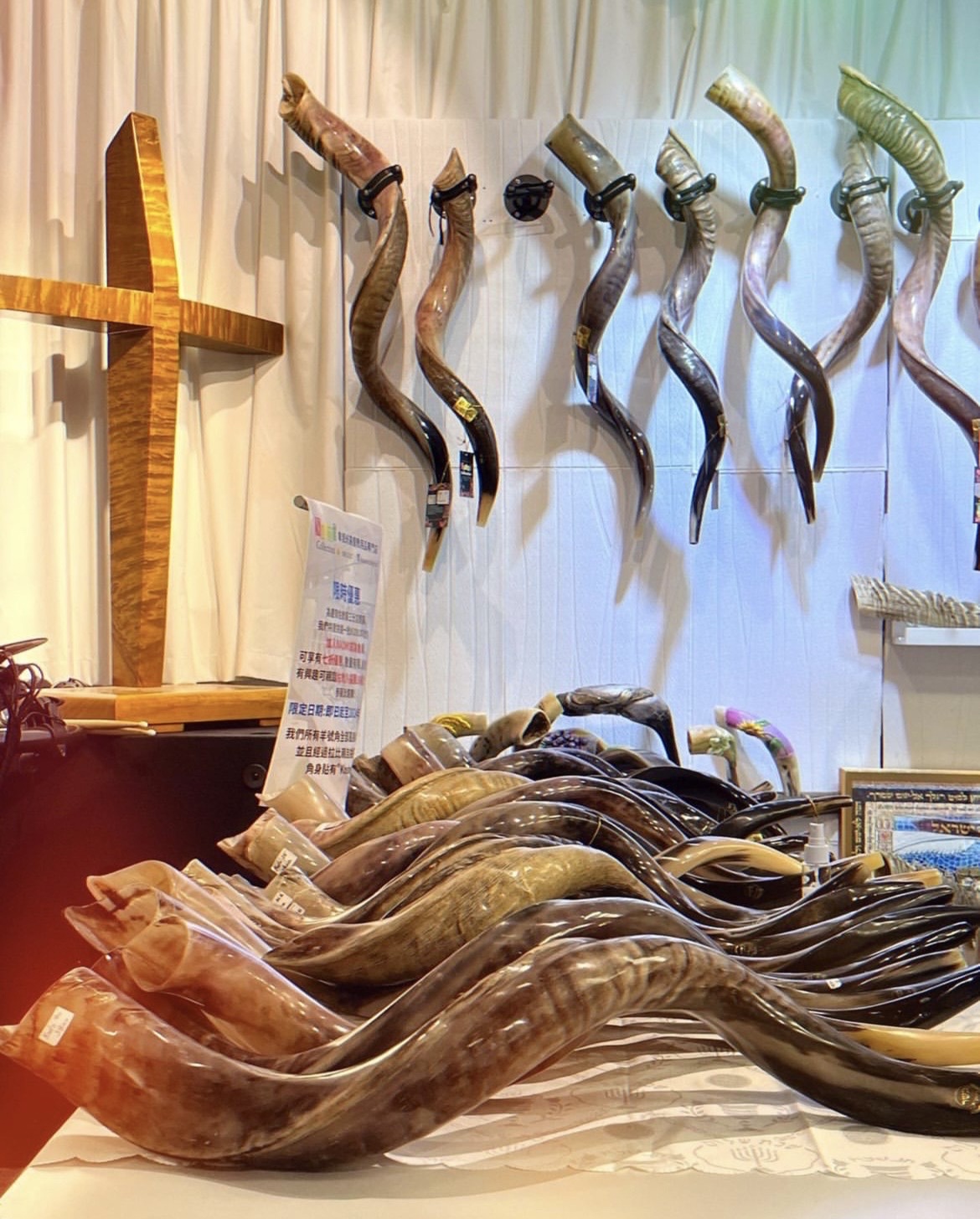0 Comments
0 Shares
142 Views
0 Reviews

Directory
Discover new people, create new connections and make new friends
- Please log in to like, share and comment!
- 0 Comments 0 Shares 71 Views 0 Reviews
-
- จเรตำรวจแห่งชาติ เผยความคืบหน้ากรณีนายแบบจีนหายตัว ล่าสุดพบตัวแล้ว ส่งกลับบ้านเกิดอย่างปลอดภัย จับมือสถานทูตแก้ปัญหาคนจีนถูกหลอกไปทำงานประเทศเพื่อนบ้าน
•
วันนี้ (17 ม.ค.) เมื่อเวลา 14.00 น.ที่อ.แม่สอด จ.ตาก พล.ต.อ.ธัชชัย ปิตะนีละบุตร จเรตำรวจแห่งชาติ ในฐานะผู้อำนวยการศูนย์พิทักษ์เด็ก สตรี ครอบครัว ป้องกันและปราบปรามการค้ามนุษย์ และภาคประมง สำนักงานตำรวจแห่งชาติ (จตช./ผอ.ศพดส.ตร.) เปิดเผยความคืบหน้ากรณีนายหยาง เจ๋ออฉี นายแบบชาวจีนที่ทางครอบครัวเดินทางเข้าร้องขอความช่วยเหลือจากพล.ต.อ.กิตติ์รัฐ พันธุ์เพ็ชร์ ผบ.ตร.เมื่อวันที่ 16 มกราคม ที่ผ่านมา ว่า จากการตรวจสอบล่าสุดกับทางสถานทูตจีน ได้รับการยืนยันว่าขณะนี้นายแบบคนดังกล่าวกลับประเทศจีนโดยปลอดภัยแล้ว
•
ส่วนกรณีนักท่องเที่ยวชาวต่างชาติที่มีการแจ้งความว่าหายตัวไปหรือติดต่อไม่ได้นั้น พล.ต.อ.ธัชชัย กล่าวว่า ทางเจ้าหน้าที่ตำรวจและเจ้าหน้าที่ที่เกี่ยวข้องมีการสืบสวนขยายผลทุกกรณี ในกรณีชาวจีนเช่นกัน ได้มีการพูดคุยกับทางสถานทูตจีนโดยเสนอว่าเมื่อพบนักท่องเที่ยวจีนเดินทางเข้าไปในพื้นที่ อ.แม่สอด จ.ตาก ไทยเราจะมีการประสานกับไปทางสถานทูต เพื่อให้สถานทูตช่วยตรวจสอบอีกครั้งหนึ่ง ซึ่งแนวทางนี้ทางสถานทูตก็เห็นด้วย อย่างไรก็ตาม โดยปกติแล้วตำรวจไทยมีการประสานทํางานร่วมกับสถานทูตต่าง ๆ อยู่แล้ว ในการช่วยเหลือติดตามในกรณีที่เกี่ยวข้องกับคนของชาตินั้น ๆ
•
ด้านนายรัชพล ศิริสาคร ทนายความ กล่าวว่า ล่าสุดได้รับการยืนยันจากทางครอบครัวของนายหยาง เจ๋อ ฉี เช่นเดียวกันว่า นายแบบคนดังกล่าวได้รับการช่วยเหลือกลับประเทศปลอดภัยแล้วจริง โดยทางครอบครัวจะทำหนังสือขอบคุณทางสถานทูตจีนและทางการไทยต่อไป
•
#MGROnline #หยางเจ๋อฉี #นายแบบ #จีน #เมียนมา #ชายแดนไทย #ชายแดนเมียนมา #ชายแดนไทยเมียนมาจเรตำรวจแห่งชาติ เผยความคืบหน้ากรณีนายแบบจีนหายตัว ล่าสุดพบตัวแล้ว ส่งกลับบ้านเกิดอย่างปลอดภัย จับมือสถานทูตแก้ปัญหาคนจีนถูกหลอกไปทำงานประเทศเพื่อนบ้าน • วันนี้ (17 ม.ค.) เมื่อเวลา 14.00 น.ที่อ.แม่สอด จ.ตาก พล.ต.อ.ธัชชัย ปิตะนีละบุตร จเรตำรวจแห่งชาติ ในฐานะผู้อำนวยการศูนย์พิทักษ์เด็ก สตรี ครอบครัว ป้องกันและปราบปรามการค้ามนุษย์ และภาคประมง สำนักงานตำรวจแห่งชาติ (จตช./ผอ.ศพดส.ตร.) เปิดเผยความคืบหน้ากรณีนายหยาง เจ๋ออฉี นายแบบชาวจีนที่ทางครอบครัวเดินทางเข้าร้องขอความช่วยเหลือจากพล.ต.อ.กิตติ์รัฐ พันธุ์เพ็ชร์ ผบ.ตร.เมื่อวันที่ 16 มกราคม ที่ผ่านมา ว่า จากการตรวจสอบล่าสุดกับทางสถานทูตจีน ได้รับการยืนยันว่าขณะนี้นายแบบคนดังกล่าวกลับประเทศจีนโดยปลอดภัยแล้ว • ส่วนกรณีนักท่องเที่ยวชาวต่างชาติที่มีการแจ้งความว่าหายตัวไปหรือติดต่อไม่ได้นั้น พล.ต.อ.ธัชชัย กล่าวว่า ทางเจ้าหน้าที่ตำรวจและเจ้าหน้าที่ที่เกี่ยวข้องมีการสืบสวนขยายผลทุกกรณี ในกรณีชาวจีนเช่นกัน ได้มีการพูดคุยกับทางสถานทูตจีนโดยเสนอว่าเมื่อพบนักท่องเที่ยวจีนเดินทางเข้าไปในพื้นที่ อ.แม่สอด จ.ตาก ไทยเราจะมีการประสานกับไปทางสถานทูต เพื่อให้สถานทูตช่วยตรวจสอบอีกครั้งหนึ่ง ซึ่งแนวทางนี้ทางสถานทูตก็เห็นด้วย อย่างไรก็ตาม โดยปกติแล้วตำรวจไทยมีการประสานทํางานร่วมกับสถานทูตต่าง ๆ อยู่แล้ว ในการช่วยเหลือติดตามในกรณีที่เกี่ยวข้องกับคนของชาตินั้น ๆ • ด้านนายรัชพล ศิริสาคร ทนายความ กล่าวว่า ล่าสุดได้รับการยืนยันจากทางครอบครัวของนายหยาง เจ๋อ ฉี เช่นเดียวกันว่า นายแบบคนดังกล่าวได้รับการช่วยเหลือกลับประเทศปลอดภัยแล้วจริง โดยทางครอบครัวจะทำหนังสือขอบคุณทางสถานทูตจีนและทางการไทยต่อไป • #MGROnline #หยางเจ๋อฉี #นายแบบ #จีน #เมียนมา #ชายแดนไทย #ชายแดนเมียนมา #ชายแดนไทยเมียนมา0 Comments 0 Shares 1328 Views 0 Reviews - มีคนเขียนว่า ทองคำ ไม่ได้มีค่าอะไร เป็นสิ่งสมมุติค่ากันขึ้นมาเอง...
..แนวคิด ..มันต้องมีอะไรสักอย่างที่แทนค่า การแลกเปลี่ยนได้..เปลือกหอยยังมี...หลักฐานเชิงประจักษ์ ในภาพ ค้นพบที่ กรีก อายุที่ทดสอบค่าตามกระบวนการแล้ว ยืนยัน ไม่น้อยกว่า 3000 ปี...และมีแบบนี้ในหลายอารยธรรม...และปัจจุบัน ทองคำ ก็ยังคงเป็นของที่หาไม่ง่ายนักตามธรรมชาติ...ฉะนั้น คู่ควรแล้ว ที่มีค่ามาจนถึงปัจจุบัน ..และต่อไปในอนาคต...ใครเงินเย็นเก็บเลย..ถ้าคาดหวังกำไรระยะสั้น...อย่าเพิ่ง....มีคนเขียนว่า ทองคำ ไม่ได้มีค่าอะไร เป็นสิ่งสมมุติค่ากันขึ้นมาเอง... ..แนวคิด ..มันต้องมีอะไรสักอย่างที่แทนค่า การแลกเปลี่ยนได้..เปลือกหอยยังมี...หลักฐานเชิงประจักษ์ ในภาพ ค้นพบที่ กรีก อายุที่ทดสอบค่าตามกระบวนการแล้ว ยืนยัน ไม่น้อยกว่า 3000 ปี...และมีแบบนี้ในหลายอารยธรรม...และปัจจุบัน ทองคำ ก็ยังคงเป็นของที่หาไม่ง่ายนักตามธรรมชาติ...ฉะนั้น คู่ควรแล้ว ที่มีค่ามาจนถึงปัจจุบัน ..และต่อไปในอนาคต...ใครเงินเย็นเก็บเลย..ถ้าคาดหวังกำไรระยะสั้น...อย่าเพิ่ง....0 Comments 0 Shares 223 Views 0 Reviews1
- 0 Comments 0 Shares 68 Views 0 Reviews
- 0 Comments 0 Shares 68 Views 0 Reviews
- 0 Comments 0 Shares 251 Views 0 Reviews
- 0 Comments 0 Shares 102 Views 0 Reviews
- สำหรับเพื่อนๆที่ไม่อยากมีเงื่อนไขเพิ่มเติม สำหรับประกันสุขภาพ และอยากจะทำประกันเพิ่ม ต้องรีบ แล้ว ก่อน 20 มีค นะครับ
Co-Paymentสำหรับเพื่อนๆที่ไม่อยากมีเงื่อนไขเพิ่มเติม สำหรับประกันสุขภาพ และอยากจะทำประกันเพิ่ม ต้องรีบ แล้ว ก่อน 20 มีค นะครับ Co-Payment0 Comments 0 Shares 177 Views 0 Reviews - อธิบดีกรมอุทยานฯ สั่งตรวจสอบ หนุ่มรับส่ง “ลูกสิงโต“ พร้อมเผยการเคลื่อนย้ายสัตว์ป่านั้นมีกฎหมายกำหนดอยู่ และการขนย้ายจะต้องคำนึงถึงสวัสดิภาพสัตว์
•
จากกรณี ไวรัลในออนไลน์ประเด็นของหนุ่มรับจ็อบขับรถส่งของผ่านแอปพลิเคชั่นหนึ่ง ที่มีลูกค้าประจำให้ขนส่ง “ลูกสิงโต“ จนกลายเป็นข่าวดังในโซเชียล
•
ล่าสุด วันนี้ (17 ม.ค.) นายอรรถพล เจริญชันษา อธิบดีกรมอุทยานฯ สั่งตรวจสอบ กรณีหนุ่มขับรถรับจ้างส่งของโพสต์คลิปลูกค้าประจำจ้างให้ส่ง ลูกสิงโต โดยไม่มีกรง ซึ่งเจ้าของยันน้องไม่งอแง นิ่งเหมือนหมา ไม่กัดแน่นอน แต่สุดท้ายสุดซนเดินป่วนทั่วรถ จนกลายเป็นไวรัลดัง ซึ่งล่าสุดเจ้าตัวต้องลบโพสต์ออกไปแล้ว
•
คลิกอ่านรายละเอียดเพิ่มเติม >>https://mgronline.com/onlinesection/detail/9680000005250
•
#MGROnline #ลูกสิงโตอธิบดีกรมอุทยานฯ สั่งตรวจสอบ หนุ่มรับส่ง “ลูกสิงโต“ พร้อมเผยการเคลื่อนย้ายสัตว์ป่านั้นมีกฎหมายกำหนดอยู่ และการขนย้ายจะต้องคำนึงถึงสวัสดิภาพสัตว์ • จากกรณี ไวรัลในออนไลน์ประเด็นของหนุ่มรับจ็อบขับรถส่งของผ่านแอปพลิเคชั่นหนึ่ง ที่มีลูกค้าประจำให้ขนส่ง “ลูกสิงโต“ จนกลายเป็นข่าวดังในโซเชียล • ล่าสุด วันนี้ (17 ม.ค.) นายอรรถพล เจริญชันษา อธิบดีกรมอุทยานฯ สั่งตรวจสอบ กรณีหนุ่มขับรถรับจ้างส่งของโพสต์คลิปลูกค้าประจำจ้างให้ส่ง ลูกสิงโต โดยไม่มีกรง ซึ่งเจ้าของยันน้องไม่งอแง นิ่งเหมือนหมา ไม่กัดแน่นอน แต่สุดท้ายสุดซนเดินป่วนทั่วรถ จนกลายเป็นไวรัลดัง ซึ่งล่าสุดเจ้าตัวต้องลบโพสต์ออกไปแล้ว • คลิกอ่านรายละเอียดเพิ่มเติม >>https://mgronline.com/onlinesection/detail/9680000005250 • #MGROnline #ลูกสิงโต0 Comments 0 Shares 649 Views 0 Reviews - https://youtu.be/3qWHS-OpmV8?si=sySgWGTmEp45nyLP
 0 Comments 0 Shares 79 Views 0 Reviews
0 Comments 0 Shares 79 Views 0 Reviews - กทม. ประกาศขอความร่วมมือ ภาครัฐ-เอกชน WFH 20 - 21 ม.ค. 68 คาดการณ์ค่าฝุ่นสัปดาห์หน้าเป็นสีส้ม มีอัตราระบายลมต่ำ ด้านผู้บริหาร รร. สั่งเปิด-ปิดได้ตามหลักเกณฑ์และดุลยพินิจ
•
(17 ม.ค. 68) นายเอกวรัญญู อัมระปาล โฆษกของกรุงเทพมหานคร เปิดเผยถึงการปรับมาตรการ WORK FROM HOME (WFH) ตามสถานการณ์ฝุ่น PM2.5 ของกรุงเทพมหานครว่า จากการคาดการณ์ปัจจัยที่เกี่ยวข้องกับค่าฝุ่น PM2.5 ในวันจันทร์และอังคารที่ 20 - 21 ม.ค. 68 พบว่า 1. มีเขตที่ค่าฝุ่นเข้าเกณฑ์สีส้ม 35 เขตขึ้นไป 2. อัตราการระบายอากาศไม่ดี คือ อยู่ระหว่าง 875 - 2,250 ตารางเมตรต่อวินาที (m2/s) 3. จุดเผา 5 วันที่ผ่านมา (11 - 15 ม.ค. 68) เกินวันละ 80 จุด
•
จึงประกาศ WFH ในวันที่ 20 - 21 ม.ค. 68 ซึ่งยังคงต้องเฝ้าติดตามสถานการณ์อย่างใกล้ชิด หากพบว่าฝุ่น PM2.5 ยังคงมีแนวโน้มสูงขึ้นต่อเนื่อง จะประกาศ WFH ต่อไปจนถึงวันที่ 24 ม.ค. 68 โดยได้มีการสื่อสารประชาสัมพันธ์ให้กับภาคีเครือข่าย WFH รับทราบล่วงหน้า เพื่อให้สามารถวางแผนการทำงานล่วงหน้า และลดผลกระทบกับหน่วยงานภาคส่วนต่าง ๆ ที่เข้าร่วม
•
คลิกอ่านรายละเอียดเพิ่มเติม >>https://mgronline.com/qol/detail/9680000005240
•
#MGROnline #โฆษกของกรุงเทพมหานคร
กทม. ประกาศขอความร่วมมือ ภาครัฐ-เอกชน WFH 20 - 21 ม.ค. 68 คาดการณ์ค่าฝุ่นสัปดาห์หน้าเป็นสีส้ม มีอัตราระบายลมต่ำ ด้านผู้บริหาร รร. สั่งเปิด-ปิดได้ตามหลักเกณฑ์และดุลยพินิจ • (17 ม.ค. 68) นายเอกวรัญญู อัมระปาล โฆษกของกรุงเทพมหานคร เปิดเผยถึงการปรับมาตรการ WORK FROM HOME (WFH) ตามสถานการณ์ฝุ่น PM2.5 ของกรุงเทพมหานครว่า จากการคาดการณ์ปัจจัยที่เกี่ยวข้องกับค่าฝุ่น PM2.5 ในวันจันทร์และอังคารที่ 20 - 21 ม.ค. 68 พบว่า 1. มีเขตที่ค่าฝุ่นเข้าเกณฑ์สีส้ม 35 เขตขึ้นไป 2. อัตราการระบายอากาศไม่ดี คือ อยู่ระหว่าง 875 - 2,250 ตารางเมตรต่อวินาที (m2/s) 3. จุดเผา 5 วันที่ผ่านมา (11 - 15 ม.ค. 68) เกินวันละ 80 จุด • จึงประกาศ WFH ในวันที่ 20 - 21 ม.ค. 68 ซึ่งยังคงต้องเฝ้าติดตามสถานการณ์อย่างใกล้ชิด หากพบว่าฝุ่น PM2.5 ยังคงมีแนวโน้มสูงขึ้นต่อเนื่อง จะประกาศ WFH ต่อไปจนถึงวันที่ 24 ม.ค. 68 โดยได้มีการสื่อสารประชาสัมพันธ์ให้กับภาคีเครือข่าย WFH รับทราบล่วงหน้า เพื่อให้สามารถวางแผนการทำงานล่วงหน้า และลดผลกระทบกับหน่วยงานภาคส่วนต่าง ๆ ที่เข้าร่วม • คลิกอ่านรายละเอียดเพิ่มเติม >>https://mgronline.com/qol/detail/9680000005240 • #MGROnline #โฆษกของกรุงเทพมหานคร0 Comments 0 Shares 480 Views 0 Reviews - ไฟไหม้บ่อขยะ บางปูหลายชุมชนจมควัน เพลิงที่สงบปะทุขึ้นอีกรอบ ดับเพลิงเร่งฉีดน้ำดับไฟให้สนิท แจ้งเตือน ปชช.สวมหน้ากาก เลี่ยงสูดดมควันไฟ ต้องการที่พักพิงชั่วคราว ติดต่อ ทต.บางปู
อ่านต่อ..https://news1live.com/detail/9680000005284
#News1feed #News1 #Sondhitalk #คุยทุกเรื่องกับสนธิ #Thaitimesไฟไหม้บ่อขยะ บางปูหลายชุมชนจมควัน เพลิงที่สงบปะทุขึ้นอีกรอบ ดับเพลิงเร่งฉีดน้ำดับไฟให้สนิท แจ้งเตือน ปชช.สวมหน้ากาก เลี่ยงสูดดมควันไฟ ต้องการที่พักพิงชั่วคราว ติดต่อ ทต.บางปู อ่านต่อ..https://news1live.com/detail/9680000005284 #News1feed #News1 #Sondhitalk #คุยทุกเรื่องกับสนธิ #Thaitimes0 Comments 0 Shares 1494 Views 0 Reviews 11
11
- 0 Comments 0 Shares 61 Views 0 Reviews
- 0 Comments 0 Shares 199 Views 0 Reviews
- 0 Comments 0 Shares 194 Views 0 Reviews
- 0 Comments 0 Shares 222 Views 0 Reviews
- หมู่บ้านคาร์ฟในฝัน#5
....
เดือนที่แล้วขุดล้อมต้นตะขบไว้ วันนี้นำมาลงปลูก ตั้งใจว่าเมื่อต้นโตพอ จะเอาไว้ผูกเปลถ่ายรูปตอนตะวันร่วง
....
สำหรับพื้นที่เริ่มใหม่ lit nit แนะนำว่าตะขบเป็นพืชอีกตัวที่ควรปลูก เพราะโตไว ให้ร่มไว มีพี่ท่านหนึ่งบอกไว้ว่า ตะขบที่ปลูกริมน้ำเมื่อลูกสุกร่วงลงบ่อเป็นอาหารปลา และมีผลทำให้เนื้อปลาหวานขึ้นด้วย จริงเท็จประการใด lit nit ไม่ยืนยัน แต่ยืนยันว่าตะขบเป็นพืชที่มีคุณค่า lit nit เองก็เคยนำคุณค่าของตะขบมาแต่งเป็นเรื่องสั้น ตีพิมพ์อยู่ในหนังสือเล่มหนึ่ง ใครสนใจหนังสือเล่มนั้นก็แจ้งเข้ามาได้ยังพอมีอยู่สี่ห้าเล่ม
#รับสร้างสวนในฝัน^^หมู่บ้านคาร์ฟในฝัน#5 .... เดือนที่แล้วขุดล้อมต้นตะขบไว้ วันนี้นำมาลงปลูก ตั้งใจว่าเมื่อต้นโตพอ จะเอาไว้ผูกเปลถ่ายรูปตอนตะวันร่วง .... สำหรับพื้นที่เริ่มใหม่ lit nit แนะนำว่าตะขบเป็นพืชอีกตัวที่ควรปลูก เพราะโตไว ให้ร่มไว มีพี่ท่านหนึ่งบอกไว้ว่า ตะขบที่ปลูกริมน้ำเมื่อลูกสุกร่วงลงบ่อเป็นอาหารปลา และมีผลทำให้เนื้อปลาหวานขึ้นด้วย จริงเท็จประการใด lit nit ไม่ยืนยัน แต่ยืนยันว่าตะขบเป็นพืชที่มีคุณค่า lit nit เองก็เคยนำคุณค่าของตะขบมาแต่งเป็นเรื่องสั้น ตีพิมพ์อยู่ในหนังสือเล่มหนึ่ง ใครสนใจหนังสือเล่มนั้นก็แจ้งเข้ามาได้ยังพอมีอยู่สี่ห้าเล่ม #รับสร้างสวนในฝัน^^0 Comments 0 Shares 653 Views 0 Reviews1
- World Military and Political (การทหารและการเมืองโลก) added video News and Politicsประธานาธิบดีอิหร่าน มาซูด เปเซชเคียน เข้าพบประธานาธิบดีวลาดิมีร์ ปูตินของรัสเซีย ที่มอสโกเพื่อลงนามข้อตกลงหุ้นส่วนทางยุทธศาสตร์ (Russia-Iran Comprehensive Strategic Partnership Agreement)
ตามรายงานก่อนหน้านี้ ข้อตกลงความร่วมมือดังกล่าว มีกำหนดระยะเวลายาวนานถึง 20 ปี
ข้อตกลงดังกล่าว จะรวมถึงข้อตกลงการป้องกันภัยคุกคามที่ครอบคลุมร่วมกันด้วย โดยมีภาระผูกพันที่จะต้องปกป้องช่วยเหลือซึ่งกันและกัน หากประเทศใดประเทศหนึ่งถูกโจมตี (ลักษณะมาตรา 5 ของนาโต้)
นอกจากนี้ ข้อตกลงความร่วมมือเชิงยุทธศาสตร์ที่ครอบคลุมนี้จะเป็นการพัฒนาครั้งสำคัญในความสัมพันธ์ระหว่างอิหร่าน-รัสเซีย ซึ่งจะรวมถึงการลงทุน ความสัมพันธ์ทางเศรษฐกิจที่กว้างขวาง การแบ่งปันความรู้ วิทยาการ และความร่วมมือทางทหารอย่างกว้างขวาง
รัสเซียได้ทำข้อตกลงหุ้นส่วนทางยุทธศาสตร์กับเกาหลีเหนือด้วยเช่นกันเมื่อกลางปี 2567ประธานาธิบดีอิหร่าน มาซูด เปเซชเคียน เข้าพบประธานาธิบดีวลาดิมีร์ ปูตินของรัสเซีย ที่มอสโกเพื่อลงนามข้อตกลงหุ้นส่วนทางยุทธศาสตร์ (Russia-Iran Comprehensive Strategic Partnership Agreement) ตามรายงานก่อนหน้านี้ ข้อตกลงความร่วมมือดังกล่าว มีกำหนดระยะเวลายาวนานถึง 20 ปี ข้อตกลงดังกล่าว จะรวมถึงข้อตกลงการป้องกันภัยคุกคามที่ครอบคลุมร่วมกันด้วย โดยมีภาระผูกพันที่จะต้องปกป้องช่วยเหลือซึ่งกันและกัน หากประเทศใดประเทศหนึ่งถูกโจมตี (ลักษณะมาตรา 5 ของนาโต้) นอกจากนี้ ข้อตกลงความร่วมมือเชิงยุทธศาสตร์ที่ครอบคลุมนี้จะเป็นการพัฒนาครั้งสำคัญในความสัมพันธ์ระหว่างอิหร่าน-รัสเซีย ซึ่งจะรวมถึงการลงทุน ความสัมพันธ์ทางเศรษฐกิจที่กว้างขวาง การแบ่งปันความรู้ วิทยาการ และความร่วมมือทางทหารอย่างกว้างขวาง รัสเซียได้ทำข้อตกลงหุ้นส่วนทางยุทธศาสตร์กับเกาหลีเหนือด้วยเช่นกันเมื่อกลางปี 25670 Comments 0 Shares 796 Views 22 0 Reviews6
- หมู่บ้านคาร์ฟในฝัน#5
....
เดือนที่แล้วขุดล้อมต้นตะขบไว้ วันนี้นำมาลงปลูก ตั้งใจว่าเมื่อต้นโตพอ จะเอาไว้ผูกเปลถ่ายรูปตอนตะวันร่วง
....
สำหรับพื้นที่เริ่มใหม่ ศิษย์เกษตรแนะนำว่าตะขบเป็นพืชอีกตัวที่ควรปลูก เพราะโตไว ให้ร่มไว มีพี่ท่านหนึ่งบอกไว้ว่า ตะขบที่ปลูกริมน้ำเมื่อลูกสุกร่วงลงบ่อเป็นอาหารปลา และมีผลทำให้เนื้อปลาหวานขึ้นด้วย จริงเท็จประการใดศิษย์เกษตรไม่ยืนยัน แต่ยืนยันว่าตะขบเป็นพืชที่มีคุณค่า ศิษย์เกษตรเองก็เคยนำคุณค่าของตะขบมาแต่งเป็นเรื่องสั้น ตีพิมพ์อยู่ในหนังสือเล่มหนึ่ง ใครสนใจหนังสือเล่มนั้นก็แจ้งเข้ามาได้ยังพอมีอยู่สี่ห้าเล่ม
#รับสร้างสวนในฝัน^^หมู่บ้านคาร์ฟในฝัน#5 .... เดือนที่แล้วขุดล้อมต้นตะขบไว้ วันนี้นำมาลงปลูก ตั้งใจว่าเมื่อต้นโตพอ จะเอาไว้ผูกเปลถ่ายรูปตอนตะวันร่วง .... สำหรับพื้นที่เริ่มใหม่ ศิษย์เกษตรแนะนำว่าตะขบเป็นพืชอีกตัวที่ควรปลูก เพราะโตไว ให้ร่มไว มีพี่ท่านหนึ่งบอกไว้ว่า ตะขบที่ปลูกริมน้ำเมื่อลูกสุกร่วงลงบ่อเป็นอาหารปลา และมีผลทำให้เนื้อปลาหวานขึ้นด้วย จริงเท็จประการใดศิษย์เกษตรไม่ยืนยัน แต่ยืนยันว่าตะขบเป็นพืชที่มีคุณค่า ศิษย์เกษตรเองก็เคยนำคุณค่าของตะขบมาแต่งเป็นเรื่องสั้น ตีพิมพ์อยู่ในหนังสือเล่มหนึ่ง ใครสนใจหนังสือเล่มนั้นก็แจ้งเข้ามาได้ยังพอมีอยู่สี่ห้าเล่ม #รับสร้างสวนในฝัน^^0 Comments 0 Shares 679 Views 0 Reviews - World Military and Political (การทหารและการเมืองโลก) added video News and Politicsทหารรัสเซียดัดแปลงทุ่นระเบิดต่อต้านรถถังต่อกันเป็นชั้น แล้วโยนเข้าไปทำลายที่สนามเพลาะแนวป้องกันของยูเครนทหารรัสเซียดัดแปลงทุ่นระเบิดต่อต้านรถถังต่อกันเป็นชั้น แล้วโยนเข้าไปทำลายที่สนามเพลาะแนวป้องกันของยูเครน0 Comments 0 Shares 455 Views 23 0 Reviews3

- Wow Yourself With Words With “Word” In Them
We love all kinds of words: big words, small words, words with silent vowels, and even the word moist. With that in mind, we wanted to find words that feature the word word in them. Without getting too wordy, we managed to find words like foreword, afterword, and doubleword that fit our criterion of being a word with the word word in the word. Being the word-wise wordsmiths that we are, we wanted to spread the good word and share our fun list of words that include the word word.
Cool off your hot word skills with these cool words about words.
headword
A headword is a word or phrase that appears as the heading of a dictionary, encyclopedia, or other reference work. For example, if you research the first president of the United States, the headword will most likely be George Washington.
catchword
A catchword is a word or phrase that someone uses so frequently that it becomes their slogan or a signature phrase associated with them. For example, comedian Stephen Colbert popularized his catchword “truthiness” when he hosted The Colbert Report.
byword
The term byword is used to mean a word or phrase that has become associated with a person or thing to the point that they are cited as a proverbial example of it. For example, the sentence The company has become a byword for success may be used to describe a profitable business. Byword is also used to mean “a proverb” or a synonym of the term household word to mean a name or phrase that many people know.
Janus word
A Janus word, also called a contranym, is a word that has opposite or nearly opposite meanings. For example, the Janus word scan can mean to briefly glance at something or to thoroughly analyze something. Fun fact: Janus words are named after the Roman god Janus, who had two heads that looked in opposite directions—much like a Janus word with its two opposite meanings.
buzzword
A buzzword is a word or phrase, often from a particular jargon, that becomes fashionable or trendy among a particular group or in popular culture. For example, the word synergy is a popular buzzword often used in business and marketing.
code word
A code word is a word or phrase that has a secret meaning that only a select few people know. For example, spies might agree to use the code word “red eagle” when they need to identify each other. The term code word is also often used to refer to a euphemism that is used in place of harsher language as in My mom said my room “needed some love,” which is code word for saying “my room is a huge mess.”
nonword
A nonword is a collection of letters that isn’t accepted as an actual word. For example, “definate” is not an English word; it is a nonword that is a common misspelling of the word definite.
keyword
A keyword is a major word in a sentence, passage, or document that typically reveals the central meaning or most important information. In technology, a keyword is a word or phrase typed into a search engine or reference software to search through content.
password
A password is a secret word or phrase that a person must recite in order to gain access to restricted areas, information, etc. For example, a door guard may only let people enter a fortress if they say the password “swordfish.” In computing, a password is a string of characters that a user must enter correctly in order to log into an account, use wireless internet, or otherwise bypass electronic security.
guide word
The term guide word is used as a synonym of headword to refer to a word or phrase used at the top of articles or entries in reference works.
curse word
A curse word, also known as a cussword or a dirty word, is a word that is considered to be profane or offensive. For example, the words ass, crap, and piss are some examples of English words that are usually considered to be curse words.
kangaroo word
The term kangaroo word refers to a word that contains its own synonym within it, spelled in the correct order. For example, the kangaroo word barren contains the word bare and the word catacomb contains the word tomb.
ghost word
A ghost word is a word that entered a language by mistake, such as a typo or translation error, rather than from actual linguistic use. For example, the word syllabus seems to have resulted from a misreading of Greek.
Which ghost words haunt the dictionary?
counterword
A counterword is a word that has picked up a much looser meaning than it originally had. Counterwords have so many meanings and/or are used so generally that they are almost meaningless. Words like good, fine, gross, awful, cute, and nice are some examples of counterwords. (You know we have better synonyms for these, starting with nice.)
loanword
A loanword is a word from one language that is used in another with little or no changes in meaning or spelling. Some English words that are loanwords from other languages include incognito (Italian), schadenfreude (German), sushi (Japanese), and piñata (Spanish).
weasel word
A weasel word is a word that weakens a statement by making it sound more confusing, ambiguous, or noncommittal. For example, the word probably is an example of a weasel word in the sentence I’ll probably do better on my next math test.
nonce word
A nonce word is a word created for only one specific occasion. For example, the cartoon The Simpsons invented the word cromulent just for the sake of making a single joke about language. (That’s not the only word they created!)
Copyright 2025, AAKKHRA, All Rights Reserved.Wow Yourself With Words With “Word” In Them We love all kinds of words: big words, small words, words with silent vowels, and even the word moist. With that in mind, we wanted to find words that feature the word word in them. Without getting too wordy, we managed to find words like foreword, afterword, and doubleword that fit our criterion of being a word with the word word in the word. Being the word-wise wordsmiths that we are, we wanted to spread the good word and share our fun list of words that include the word word. Cool off your hot word skills with these cool words about words. headword A headword is a word or phrase that appears as the heading of a dictionary, encyclopedia, or other reference work. For example, if you research the first president of the United States, the headword will most likely be George Washington. catchword A catchword is a word or phrase that someone uses so frequently that it becomes their slogan or a signature phrase associated with them. For example, comedian Stephen Colbert popularized his catchword “truthiness” when he hosted The Colbert Report. byword The term byword is used to mean a word or phrase that has become associated with a person or thing to the point that they are cited as a proverbial example of it. For example, the sentence The company has become a byword for success may be used to describe a profitable business. Byword is also used to mean “a proverb” or a synonym of the term household word to mean a name or phrase that many people know. Janus word A Janus word, also called a contranym, is a word that has opposite or nearly opposite meanings. For example, the Janus word scan can mean to briefly glance at something or to thoroughly analyze something. Fun fact: Janus words are named after the Roman god Janus, who had two heads that looked in opposite directions—much like a Janus word with its two opposite meanings. buzzword A buzzword is a word or phrase, often from a particular jargon, that becomes fashionable or trendy among a particular group or in popular culture. For example, the word synergy is a popular buzzword often used in business and marketing. code word A code word is a word or phrase that has a secret meaning that only a select few people know. For example, spies might agree to use the code word “red eagle” when they need to identify each other. The term code word is also often used to refer to a euphemism that is used in place of harsher language as in My mom said my room “needed some love,” which is code word for saying “my room is a huge mess.” nonword A nonword is a collection of letters that isn’t accepted as an actual word. For example, “definate” is not an English word; it is a nonword that is a common misspelling of the word definite. keyword A keyword is a major word in a sentence, passage, or document that typically reveals the central meaning or most important information. In technology, a keyword is a word or phrase typed into a search engine or reference software to search through content. password A password is a secret word or phrase that a person must recite in order to gain access to restricted areas, information, etc. For example, a door guard may only let people enter a fortress if they say the password “swordfish.” In computing, a password is a string of characters that a user must enter correctly in order to log into an account, use wireless internet, or otherwise bypass electronic security. guide word The term guide word is used as a synonym of headword to refer to a word or phrase used at the top of articles or entries in reference works. curse word A curse word, also known as a cussword or a dirty word, is a word that is considered to be profane or offensive. For example, the words ass, crap, and piss are some examples of English words that are usually considered to be curse words. kangaroo word The term kangaroo word refers to a word that contains its own synonym within it, spelled in the correct order. For example, the kangaroo word barren contains the word bare and the word catacomb contains the word tomb. ghost word A ghost word is a word that entered a language by mistake, such as a typo or translation error, rather than from actual linguistic use. For example, the word syllabus seems to have resulted from a misreading of Greek. Which ghost words haunt the dictionary? counterword A counterword is a word that has picked up a much looser meaning than it originally had. Counterwords have so many meanings and/or are used so generally that they are almost meaningless. Words like good, fine, gross, awful, cute, and nice are some examples of counterwords. (You know we have better synonyms for these, starting with nice.) loanword A loanword is a word from one language that is used in another with little or no changes in meaning or spelling. Some English words that are loanwords from other languages include incognito (Italian), schadenfreude (German), sushi (Japanese), and piñata (Spanish). weasel word A weasel word is a word that weakens a statement by making it sound more confusing, ambiguous, or noncommittal. For example, the word probably is an example of a weasel word in the sentence I’ll probably do better on my next math test. nonce word A nonce word is a word created for only one specific occasion. For example, the cartoon The Simpsons invented the word cromulent just for the sake of making a single joke about language. (That’s not the only word they created!) Copyright 2025, AAKKHRA, All Rights Reserved.0 Comments 0 Shares 1525 Views 0 Reviews1
- “Venom” vs. “Poison”: Which One Is More Harmful To You?
Here’s the obvious thing about poison and venom: you don’t want either one in your body. But after that, things can get confusing. Although the two words are sometimes used interchangeably in casual use, a distinction is made between them in scientific contexts.
In this article, we’ll look at the key differences between poison and venom as well as the adjective forms poisonous and venomous, especially in the context of snakes, plants, and other living things.
Quick summary
The word poison can refer to any substance that is inherently harmful to a living thing—especially a substance that’s intended to be harmful. The word venom is more specific—it refers to a poisonous substance produced in the body of an animal and actively used to cause harm through injection, such as through a snake bite, a spider bite, or an insect sting. Venom is sometimes called poison in casual use, and animals that are venomous are sometimes casually described as poisonous, as in poisonous snakes. But in reference to organisms, there is a difference: poison is secreted through the skin or delivered through ingestion.
What is the difference between poison vs. venom?
The word poison can refer to any substance with an inherent property that makes it harmful or even deadly. The word is perhaps most often used to refer to substances that are intended to cause harm in this way, as in rat poison or The poison they used was a nerve agent.
The word poison is also sometimes used to refer to naturally occurring toxic chemicals and substances, such as arsenic or cyanide (which can also be used intentionally to cause harm). It’s also sometimes used to refer to manufactured chemicals that aren’t intended to cause harm but can if ingested, such as bleach or other cleaners.
The term venom is much more specific—it refers to a dangerous substance produced in the body of an animal, such as in some snakes, spiders, and wasps, and delivered via injection. Such animals may use venom as a way to defend themselves or as part of how they prey on other animals. Snakes are known for delivering venom via a bite, but some can spray or “spit” venom. Wasps and other insects can inject venom via stingers. Some jellyfish inject venom through barbed tentacles.
The toxicity of venom varies widely. The effects of different venoms range from minor irritation to death.
The toxic substances produced by some animals may be referred to as poison instead of venom. This is the case when the substance is simply secreted by the animal or stored inside its body (as in the poison-arrow frog), as opposed to being actively injected or sprayed.
Animals aren’t the only living things that produce poisonous substances. Many plants contain substances that are toxic if they’re ingested or come into contact with skin, but such a substance is typically called a poison as opposed to a venom.
Despite the technical distinction between the words, animal venom is sometimes generally referred to as poison.
Another difference in how we use the words: unlike the word venom, poison is also commonly used as a verb. It can mean “to administer poison to (a person or animal)” or “to add poison to something,” as in She poisoned the soup.
poisonous vs. venomous
The adjective poisonous is used broadly to describe substances that are considered poisons. It may also be applied to things that contain a substance considered a poison, as in The leaves of that plant are poisonous.
The adjective venomous is more narrowly applied to animals that produce venom, especially if they’re able to inject that venom as a way of actively defending themselves or preying on other animals.
However, in the context of animals, the word poisonous is often used casually to mean the same thing as venomous, such as in terms like poisonous snakes, which is often used to distinguish such snakes from ones that don’t have venom.
Although rare, it’s possible for an animal to be accurately described as both poisonous and venomous. The Asian tiger snake is one commonly cited example of this: it has a venomous bite, but it’s also poisonous because its body contains the poison from the poisonous toads that it eats.
Copyright 2025, AAKKHRA, All Rights Reserved.“Venom” vs. “Poison”: Which One Is More Harmful To You? Here’s the obvious thing about poison and venom: you don’t want either one in your body. But after that, things can get confusing. Although the two words are sometimes used interchangeably in casual use, a distinction is made between them in scientific contexts. In this article, we’ll look at the key differences between poison and venom as well as the adjective forms poisonous and venomous, especially in the context of snakes, plants, and other living things. Quick summary The word poison can refer to any substance that is inherently harmful to a living thing—especially a substance that’s intended to be harmful. The word venom is more specific—it refers to a poisonous substance produced in the body of an animal and actively used to cause harm through injection, such as through a snake bite, a spider bite, or an insect sting. Venom is sometimes called poison in casual use, and animals that are venomous are sometimes casually described as poisonous, as in poisonous snakes. But in reference to organisms, there is a difference: poison is secreted through the skin or delivered through ingestion. What is the difference between poison vs. venom? The word poison can refer to any substance with an inherent property that makes it harmful or even deadly. The word is perhaps most often used to refer to substances that are intended to cause harm in this way, as in rat poison or The poison they used was a nerve agent. The word poison is also sometimes used to refer to naturally occurring toxic chemicals and substances, such as arsenic or cyanide (which can also be used intentionally to cause harm). It’s also sometimes used to refer to manufactured chemicals that aren’t intended to cause harm but can if ingested, such as bleach or other cleaners. The term venom is much more specific—it refers to a dangerous substance produced in the body of an animal, such as in some snakes, spiders, and wasps, and delivered via injection. Such animals may use venom as a way to defend themselves or as part of how they prey on other animals. Snakes are known for delivering venom via a bite, but some can spray or “spit” venom. Wasps and other insects can inject venom via stingers. Some jellyfish inject venom through barbed tentacles. The toxicity of venom varies widely. The effects of different venoms range from minor irritation to death. The toxic substances produced by some animals may be referred to as poison instead of venom. This is the case when the substance is simply secreted by the animal or stored inside its body (as in the poison-arrow frog), as opposed to being actively injected or sprayed. Animals aren’t the only living things that produce poisonous substances. Many plants contain substances that are toxic if they’re ingested or come into contact with skin, but such a substance is typically called a poison as opposed to a venom. Despite the technical distinction between the words, animal venom is sometimes generally referred to as poison. Another difference in how we use the words: unlike the word venom, poison is also commonly used as a verb. It can mean “to administer poison to (a person or animal)” or “to add poison to something,” as in She poisoned the soup. poisonous vs. venomous The adjective poisonous is used broadly to describe substances that are considered poisons. It may also be applied to things that contain a substance considered a poison, as in The leaves of that plant are poisonous. The adjective venomous is more narrowly applied to animals that produce venom, especially if they’re able to inject that venom as a way of actively defending themselves or preying on other animals. However, in the context of animals, the word poisonous is often used casually to mean the same thing as venomous, such as in terms like poisonous snakes, which is often used to distinguish such snakes from ones that don’t have venom. Although rare, it’s possible for an animal to be accurately described as both poisonous and venomous. The Asian tiger snake is one commonly cited example of this: it has a venomous bite, but it’s also poisonous because its body contains the poison from the poisonous toads that it eats. Copyright 2025, AAKKHRA, All Rights Reserved.0 Comments 0 Shares 1255 Views 0 Reviews - How To Spell W And Other Letters Of The Alphabet
No doubt you know your ABCs, but do you know how to spell the names of the letters themselves? For example, how would you spell the name of the letter W? In this article, we are going to take a look at how to spell out the different consonants of the alphabet. Why just the consonants? Well, spelling the names of the vowels is unusual, and the spellings vary widely.
We don’t often have a reason to spell out the names of letters. They show up in some words or phrases, like tee-shirt or em-dash. Knowing how to spell out the letters is a good trick to have in your back pocket when playing word games like Scrabble and Words With Friends. Mostly though, the spelled-out names of the consonants are fun trivia any word lover will enjoy.
B – bee
The letter B is spelled just like the insect: b-e-e. The plural is bees, like something you might find in a hive. Before it was bee, the letter B was part of the Phoenician alphabet and was known as beth.
C – cee
The spelling of the letter C might surprise you. It isn’t spelled with an S but a C: c-e-e. The spelling cee might come in handy especially when writing about something “shaped or formed like the letter C,” as in she was curled in a cee, holding her pillow.
D – dee
You might be picking up on a pattern here. Like B and C, the letter D is spelled out with -ee: d-e-e. Like the letter B, dee originally had another name in the Phoenician alphabet: daleth.
F – ef
The letter F is spelled e-f. The spelled out name ef is occasionally used as an abbreviation for much saltier language.
G – gee
With the exception of ef, the letter G is spelled like the other letters we have seen so far: gee. Particularly in American slang, the spelled out name gee is used as an abbreviation for grand, in the sense of “thousand dollars.”
H – aitch
The letter H has a tricky spelling and pronunciation. It is spelled aitch, but the pronunciation of its name is [ eych ]. The letter comes from Northern Semitic languages and its modern corollary is the Hebrew letter heth.
J – jay
The letter J has a long and complicated history—it began as a swash, a typographical embellishment for the already existing I—but its spelling is relatively straightforward: jay. Like C, the spelling jay can be useful when describing something in the shape of the letter.
K – kay
You may already be familiar with the spelling of the letter K from the expression okay, or OK. Just like in okay, K is typically spelled k-a-y. Okay is a unique Americanism that you can read more about here.
L – el
El is most easily recognizable as the common abbreviation for elevated railroad. However, it is also the spelling for the letter L.
M – em
The spelling of the letter M, em, can be found in the name of the punctuation mark em dash (—). The name of the punctuation mark comes from the fact that it is the width of the letter M when printed.
N – en
Much like the letters em and en themselves, the em-dash and en-dash are often mixed up. The en dash is, you guessed it, the width of the letter N when printed. The en dash (–) is shorter than an em dash (—).
P – pee
The most scatological letter name is pee (P). The use of pee as a verb and noun to refer to urination actually comes from a euphemism for the vulgar piss, using the spelling of the initial letter in piss: P.
Q – cue
The letter Q has the honor of being one of two letters that is not included in the spelling of its own name: cue. The use of cue as a verb or noun to refer to “anything that excites to action” comes from another abbreviation related to the letter itself. In acting scripts, the Latin quandō, meaning “when” was abbreviated q, which later came to be spelled cue.
R – ar
The name of the letter R sounds like something a pirate might say: ar. The letter R was called by the Roman poet Persius littera canina or “the canine letter.” It was so named because pronouncing ar sounds like a dog’s growl.
S – ess
The snake-like S is spelled ess, with two terminal -s‘s. Along with cee and jay, ess can also be used to describe “something shaped like an S,” as in The roads were laid out nested double esses along the riverbank.
T – tee
A letter whose spelling you are more likely to be familiar with is T or tee, because it often appears in spellings of T-shirt (e.g., tee-shirt). The tee shirt is so named because it is a shirt in the shape of a T.
V – vee
Another letter that pops up in fashion is V or vee. You see this most often when describing certain clothing elements, such as a vee neckline or a vee-shaped dart.
W – double-u
The letter W is one of the stranger letters in the alphabet, and so is its spelling. As we noted already, we don’t usually spell vowels out, so we end up with the awkward double-u. The plural spelling is double-ues. Before it was merged into one letter (W), the sound was represented with the the digraph -uu- or double-u.
X – ex
The spelling of the letter X, ex, might seem foreboding. That’s because we often equate it with the prefix ex-, meaning “out of” or “without.” We also use ex as a verb to mean putting an X over something, literally or metaphorically, as in I exed out the name on the list. The letter X has found use as we explore new ways of describing gender identity and expression, which you can read about here.
Y – wye
The letter Y is spelled wye, like the river in Great Britain. Wye has been adopted into electrical and railroad terminology to describe circuits and track arrangements, respectively, that are in the shape of a Y. Interestingly, the letter Y replaced an Old English letter called thorn.
Z – zee
In American English, the letter Z is spelled and pronounced zee, patterned off of other consonants like dee and gee. However, in British English, the letter Z is named zed. Zed comes from the Middle French zede, itself from the ancient Greek zêta.
Copyright 2025, AAKKHRA, All Rights Reserved.How To Spell W And Other Letters Of The Alphabet No doubt you know your ABCs, but do you know how to spell the names of the letters themselves? For example, how would you spell the name of the letter W? In this article, we are going to take a look at how to spell out the different consonants of the alphabet. Why just the consonants? Well, spelling the names of the vowels is unusual, and the spellings vary widely. We don’t often have a reason to spell out the names of letters. They show up in some words or phrases, like tee-shirt or em-dash. Knowing how to spell out the letters is a good trick to have in your back pocket when playing word games like Scrabble and Words With Friends. Mostly though, the spelled-out names of the consonants are fun trivia any word lover will enjoy. B – bee The letter B is spelled just like the insect: b-e-e. The plural is bees, like something you might find in a hive. Before it was bee, the letter B was part of the Phoenician alphabet and was known as beth. C – cee The spelling of the letter C might surprise you. It isn’t spelled with an S but a C: c-e-e. The spelling cee might come in handy especially when writing about something “shaped or formed like the letter C,” as in she was curled in a cee, holding her pillow. D – dee You might be picking up on a pattern here. Like B and C, the letter D is spelled out with -ee: d-e-e. Like the letter B, dee originally had another name in the Phoenician alphabet: daleth. F – ef The letter F is spelled e-f. The spelled out name ef is occasionally used as an abbreviation for much saltier language. G – gee With the exception of ef, the letter G is spelled like the other letters we have seen so far: gee. Particularly in American slang, the spelled out name gee is used as an abbreviation for grand, in the sense of “thousand dollars.” H – aitch The letter H has a tricky spelling and pronunciation. It is spelled aitch, but the pronunciation of its name is [ eych ]. The letter comes from Northern Semitic languages and its modern corollary is the Hebrew letter heth. J – jay The letter J has a long and complicated history—it began as a swash, a typographical embellishment for the already existing I—but its spelling is relatively straightforward: jay. Like C, the spelling jay can be useful when describing something in the shape of the letter. K – kay You may already be familiar with the spelling of the letter K from the expression okay, or OK. Just like in okay, K is typically spelled k-a-y. Okay is a unique Americanism that you can read more about here. L – el El is most easily recognizable as the common abbreviation for elevated railroad. However, it is also the spelling for the letter L. M – em The spelling of the letter M, em, can be found in the name of the punctuation mark em dash (—). The name of the punctuation mark comes from the fact that it is the width of the letter M when printed. N – en Much like the letters em and en themselves, the em-dash and en-dash are often mixed up. The en dash is, you guessed it, the width of the letter N when printed. The en dash (–) is shorter than an em dash (—). P – pee The most scatological letter name is pee (P). The use of pee as a verb and noun to refer to urination actually comes from a euphemism for the vulgar piss, using the spelling of the initial letter in piss: P. Q – cue The letter Q has the honor of being one of two letters that is not included in the spelling of its own name: cue. The use of cue as a verb or noun to refer to “anything that excites to action” comes from another abbreviation related to the letter itself. In acting scripts, the Latin quandō, meaning “when” was abbreviated q, which later came to be spelled cue. R – ar The name of the letter R sounds like something a pirate might say: ar. The letter R was called by the Roman poet Persius littera canina or “the canine letter.” It was so named because pronouncing ar sounds like a dog’s growl. S – ess The snake-like S is spelled ess, with two terminal -s‘s. Along with cee and jay, ess can also be used to describe “something shaped like an S,” as in The roads were laid out nested double esses along the riverbank. T – tee A letter whose spelling you are more likely to be familiar with is T or tee, because it often appears in spellings of T-shirt (e.g., tee-shirt). The tee shirt is so named because it is a shirt in the shape of a T. V – vee Another letter that pops up in fashion is V or vee. You see this most often when describing certain clothing elements, such as a vee neckline or a vee-shaped dart. W – double-u The letter W is one of the stranger letters in the alphabet, and so is its spelling. As we noted already, we don’t usually spell vowels out, so we end up with the awkward double-u. The plural spelling is double-ues. Before it was merged into one letter (W), the sound was represented with the the digraph -uu- or double-u. X – ex The spelling of the letter X, ex, might seem foreboding. That’s because we often equate it with the prefix ex-, meaning “out of” or “without.” We also use ex as a verb to mean putting an X over something, literally or metaphorically, as in I exed out the name on the list. The letter X has found use as we explore new ways of describing gender identity and expression, which you can read about here. Y – wye The letter Y is spelled wye, like the river in Great Britain. Wye has been adopted into electrical and railroad terminology to describe circuits and track arrangements, respectively, that are in the shape of a Y. Interestingly, the letter Y replaced an Old English letter called thorn. Z – zee In American English, the letter Z is spelled and pronounced zee, patterned off of other consonants like dee and gee. However, in British English, the letter Z is named zed. Zed comes from the Middle French zede, itself from the ancient Greek zêta. Copyright 2025, AAKKHRA, All Rights Reserved.0 Comments 0 Shares 1509 Views 0 Reviews1



















